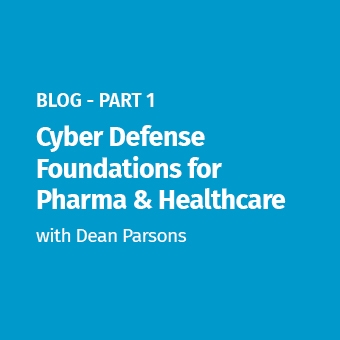When stories of cyber attacks against industrial control systems (ICS) emerge there are always statements around what malware did or did not do in the environment. To truly understand the impact on industrial control systems (ICS) though requires the understanding of the system itself and what is possible. That is the aim of this blog series; to educate folks in the ICS community and those in other communities about sectors that they may be unfamiliar with. The blog series is not tied to any specific scenario or real world events but focuses on educating what kind of impact could potentially be had in an ICS in different in industries. In short, what would account for a bad day regardless of what capability was used to achieve it?
This second series in the blog post follows Patrick Coyle's excellent blog on Cyber Attacks on a Solution Polymer Chemical Process. I am very pleased to introduce Chris Sistrunk's (@chrissistrunk) important contribution to the series in a two part blog looking at electric transmission and distribution. The first part of the blog focuses on explaining Transmission and Distribution Substations. The second part of the blog will be released after and describe the attack vectors and potential impact. You can also check out Chris' blog page here. The following was written by Chris:
Cyber-Attacks on Electric Transmission and Distribution Substations
The electric grid is unlike any other critical infrastructure. It is THE critical infrastructure, not just for the U.S., but for most every country. Electricity for most is not a luxury, but a necessity, especially for businesses, manufacturers, and at home. The Internet itself would not be possible without electricity. Efforts to secure this precious critical infrastructure have been going on for over a decade now, especially since NERC/CIP regulations and the age of Stuxnet. In this blog, Robert asked me to cover what a pure digital (aka "cyber") attack on Transmission and Distribution Substations would look like. I will not cover attacks on the utility Energy Management System (EMS) or the State Estimator, as this has been covered by Reuben Santamarta.
Before I want to dive into a discussion on attacking the digital parts of a power substation, I need to introduce you to what a substation is, the major substation components, and the smart components of a substation that control and protect the power lines.
A Little Background
The Electric Power System, based on three-phase alternating current, was conceived in the 1880s by great engineers and scientists from around the world such as Galileo Ferraris, Mikhail Dolivo-Dobrovolsky, Nikola Telsa, William Stanley Jr., Charles Steinmetz, and George Westinghouse Jr. By 1900, electric power plants, lines, and substations were being installed to meet the demand for electricity. Those early systems involved only a single transmission line. In 1914, the first transmission grid between multiple power companies in the U.S. was brought online between what is now Southern Company and Duke Energy.
The basic purpose and design of power substations has not changed much since the 1900s. A transmission substation connects multiple high voltage transmission lines together. A distribution substation is what connects high voltage transmission lines to medium voltage distribution lines, also known as feeders, which run to cities and neighborhoods. Transmission voltages are generally classified as 69kV up to 765kV, while distribution voltages generally range from 4kV to 35kV. Substations can be transmission or distribution only, mixed, large and small.
Substation Equipment Types
The major equipment that exists in a substation can be broken down into three basic duties:
- switching power on and off to equipment, buses, or lines
- raising or lowering the voltage
- protecting, monitoring, and controlling the equipment (that does 1 and 2)
Switching devices include circuit breakers, circuit switches, load break switches, disconnect switches (manual and motor operated), fuses, and grounding switches. These switching devices are eventually tied to a busbar (bus), which connects circuits with the same voltage level together. There will be at least one substation bus for each voltage level. Substations can use several different bus arrangements such as single bus, double bus, main and transfer bus, and ring bus. These designs have different costs and different levels of reliability.
Devices that change the voltage are power transformers, autotransformers, potential transformers, current transformers, capacitor banks, and reactors. Power transformers have two windings, one for high voltage, and the other for a medium voltage. These are in most every distribution substation. Autotransformers consist of one winding and are used in transmission substations to change the voltage from a high voltage such as 500kV to a lower voltage such as 230kV. Autotransformers are usually the largest and most expensive pieces of equipment in a transmission substation. Potential and current transformers are used to lower the line and bus voltage and current to low levels that can be used by protective relaying equipment and panel meters in the control house. Capacitor banks and reactors are used for power factor correction.
Devices that protect substation equipment include protective relays, insulators, lightning protection, and the substation ground grid. Protective relays are designed to sense electrical faults and send commands to trip or close circuit breakers to keep expensive equipment from becoming damaged. There are relays for protecting transmission lines, transformers, busses, breakers, capacitor banks, and more. Insulators are for providing electric insulation barrier from energized conductors to support structures and other non-energized equipment. Lightning arresters and shield wires protect substations from lightning, which is important in lightning-prone areas. The ground grid provides a path to dissipate current and is also a safety measure to protect substation workers. Monitoring devices include meters that display and record voltage, amps, megawatts, megavars, power factor, synchronization, breaker contact positions and more. Other monitoring and control devices are the RTU and the Fault Recorder. Typically, the protective relays, meters, RTUs, and fault recorders are installed in the Substation Control House.
Also in the control house is the substation battery bank (typically 48 or 125 VDC). The battery bank is a very important part of the substation because it enables the protective relays to trip the circuit breakers in the case of a fault and also powers the RTU for communicating with the central SCADA system.
Substation Protection, Monitoring, and Control Equipment
If Nikola Telsa or George Westinghouse walked into a substation today, they would likely recognize the circuit breakers, switches, transformers, and other equipment in the substation yard. What they wouldn't immediately recognize is the relays, monitors, RTU, and communications equipment inside the control house - the substation brain. The same electrical equations and principles still apply to modern protection, monitoring, and control equipment, but the technology has changed significantly since the 1900s.
Protective relays used to be electromechanical, single function devices that relied on the physical properties of electric fields and currents. They were designed to detect abnormal conditions on power lines, breakers, or transformers, and then make a programmed decision such as trip a breaker. The invention of microprocessor-based relaying in 1984 by Ed Schweitzer III showed that this new technology enabled relays to perform many relaying functions, store relay configurations and operational fault data, and later even perform communication functions with serial and/or Ethernet ports. Relays can communicate peer-to-peer to perform coordinated functions like protecting both ends of a transmission line, or coordinate restoration of multiple distribution feeders after an outage. This peer-to-peer communications may be done over dedicated copper pilot wire, powerline carrier, microwave radio, other radio types, serial communication over optical ground wire (OPGW), and even Ethernet in modern substations. Relays may also be connected to relay gateways for remote engineering access or RTUs for SCADA communication.
Monitoring equipment such as volt meters, digital fault recorders (DFRs), and Phasor Measurement Units (PMUs) are also microprocessor-based in modern substations, and they have the ability to store substation data and even trend it over a time period. DFRs are meant to record substation operations with millisecond accuracy during a fault. They are used for forensics purposes along with individual relay fault records to help find a root cause of a fault so engineers can find and fix the problem.
Naturally, relays are part of control equipment, but the main controller in a substation is the SCADA RTU, because the RTU can control multiple breakers, load break switches, transformer load-tap changers, and other substation functions. The first RTUs in the 1930s, such as the Westinghouse Visicode, were simple devices that could read breaker statuses and send breaker controls. Communications to the first RTUs were over a pair of copper telephone wires from the Control Center master. In the 1960s and 1970s, RTUs transitioned to solid state design and then in the late 1980s to microprocessors where they gained more applications, protocols, and communication ports. Some companies started calling RTUs by a newer name, substation gateways. New substation RTUs are based on Windows, Windows Embedded, Linux, and VXworks and usually keep the ability to translate SCADA and automation protocols as well as perform IEC 61131 logic, powered by CoDeSys or other logic engines. Several new RTUs even have security features such as RADIUS or LDAP, SSH, and syslog.
The Smarter Grid
Protective relays and RTUs have always been pretty smart from their beginnings. This means a substation operator didn't have to live next to the substation in a house sitting by the phone anymore, which is the way it was in the 1920s. Substation automation made it possible to provide more efficiency and reliability to the electric system. In the last decade, the term "smart grid" has become pretty popular. For many, smart grid, means smart meters, which is only part of the picture. My definition of smart grid is the overlaying modern communications networks on top of the entire electric network. This increase in connectivity empowers engineers and operators with faster access to better data than ever before. For instance, protective relays and sensors that communicate in concert can pinpoint the location of a fault and repair crews can be dispatched to the location of the trouble instead of them having to search the entire line for the fault.
Because of the smart grid era (greater connectivity) modern substations have several types of communications equipment in them. Besides the typical substation communications equipment such as POTS lines, modems, multiplexers, powerline carrier sets, and fiber-optics panels, there may be routers, terminal servers, serial and Ethernet radios, switches, and firewalls. Substation LANs connect to the SCADA WAN. Some of the ICS protocols found on a substation LAN are IEC 61850 MMS and GOOSE, DNP3, IEC 60870-5-104, Modbus TCP, and C37.118.
However, with increased connectivity requires increased security. When substation devices first had the ability to be connected to Ethernet-based networks starting in the late 1990s, security was an afterthought. Since 2010, Over 1,000 publicly known ICS vulnerabilities have been discovered, reported, and many have been fixed. Vendors are finally starting to include security features in these substation intelligent electronic devices (IEDs). End users are becoming more aware of the importance of security. Standards bodies are concerned about security too and secure authentication has been added to DNP3 and IEC 104 SCADA protocols as an example.
Chris Sistrunk is a Senior Consultant at Mandiant, focusing on cyber security for industrial control systems (ICS) and critical infrastructure. Prior to joining Mandiant, Chris was a Senior Engineer at Entergy (over 11 years) where he was the Subject Matter Expert (SME) for Transmission & Distribution SCADA systems.
The second part in this blog post will cover attack vectors and impacts



